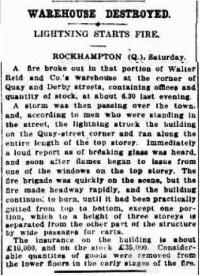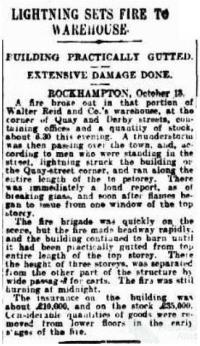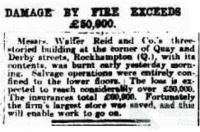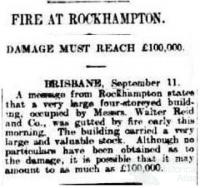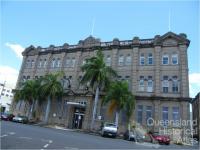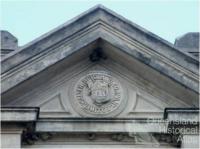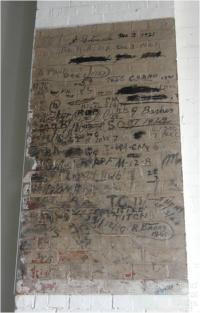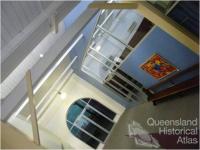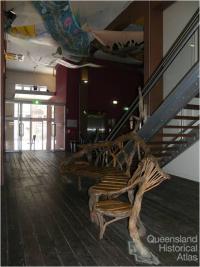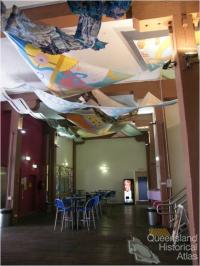- Home
- Quintessential Queensland
- Distinctiveness
- Perceptions
- Perceptions: how people understand the landscape
- From runs to closer settlement
- Geological survey of Queensland
- Mapping a new colony, 1860-80
- Mapping the Torres Strait: from TI to Magani Malu and Zenadh Kes
- Order in Paradise: a colonial gold field
- Queensland atlas, 1865
- Queensland mapping since 1900
- Queensland: the slogan state
- Rainforests of North Queensland
- Walkabout
- Queenslanders
- Queenslanders: people in the landscape
- Aboriginal heroes: episodes in the colonial landscape
- Australian South Sea Islanders
- Cane fields and solidarity in the multiethnic north
- Chinatowns
- Colonial immigration to Queensland
- Greek Cafés in the landscape of Queensland
- Hispanics and human rights in Queensland’s public spaces
- Italians in north Queensland
- Lebanese in rural Queensland
- Queensland clothing
- Queensland for ‘the best kind of population, primary producers’
- Too remote, too primitive and too expensive: Scandinavian settlers in colonial Queensland
- Distance
- Movement
- Movement: how people move through the landscape
- Air travel in Queensland
- Bicycling through Brisbane, 1896
- Cobb & Co
- Journey to Hayman Island, 1938
- Law and story-strings
- Mobile kids: children’s explorations of Cherbourg
- Movable heritage of North Queensland
- Passages to India: military linkages with Queensland
- The Queen in Queensland, 1954
- Transient Chinese in colonial Queensland
- Travelling times by rail
- Pathways
- Pathways: how things move through the landscape and where they are made
- Aboriginal dreaming paths and trading ways
- Chinese traders in the nineteenth century
- Introducing the cane toad
- Pituri bag
- Press and the media
- Radio in Queensland
- Red Cross Society and World War I in Queensland
- The telephone in Queensland
- Where did the trams go?
- ‘A little bit of love for me and a murder for my old man’: the Queensland Bush Book Club
- Movement
- Division
- Separation
- Separation: divisions in the landscape
- Asylums in the landscape
- Brisbane River
- Changing landscape of radicalism
- Civil government boundaries
- Convict Brisbane
- Dividing Queensland - Pauline Hanson’s One Nation Party
- High water mark: the shifting electoral landscape 2001-12
- Hospitals in the landscape
- Indigenous health
- Palm Island
- Secession movements
- Separate spheres: gender and dress codes
- Separating land, separating culture
- Stone walls do a prison make: law on the landscape
- The 1967 Referendum – the State comes together?
- Utopian communities
- Whiteness in the tropics
- Conflict
- Conflict: how people contest the landscape
- A tale of two elections – One Nation and political protest
- Battle of Brisbane – Australian masculinity under threat
- Dangerous spaces - youth politics in Brisbane, 1960s-70s
- Fortress Queensland 1942-45
- Grassy hills: colonial defence and coastal forts
- Great Shearers’ Strike of 1891
- Iwasaki project
- Johannes Bjelke-Petersen: straddling a barbed wire fence
- Mount Etna: Queensland's longest environmental conflict
- Native Police
- Skyrail Cairns (Research notes)
- Staunch but conservative – the trade union movement in Rockhampton
- The Chinese question
- Thomas Wentworth Wills and Cullin-la-ringo Station
- Separation
- Dreaming
- Imagination
- Imagination: how people have imagined Queensland
- Brisbane River and Moreton Bay: Thomas Welsby
- Changing views of the Glasshouse Mountains
- Imagining Queensland in film and television production
- Jacaranda
- Literary mapping of Brisbane in the 1990s
- Looking at Mount Coot-tha
- Mapping the Macqueen farm
- Mapping the mythic: Hugh Sawrey's ‘outback’
- People’s Republic of Woodford
- Poinsettia city: Brisbane’s flower
- The Pineapple Girl
- The writers of Tamborine Mountain
- Vance and Nettie Palmer
- Memory
- Memory: how people remember the landscape
- Anna Wickham: the memory of a moment
- Berajondo and Mill Point: remembering place and landscape
- Cemeteries in the landscape
- Landscapes of memory: Tjapukai Dance Theatre and Laura Festival
- Monuments and memory: T.J. Byrnes and T.J. Ryan
- Out where the dead towns lie
- Queensland in miniature: the Brisbane Exhibition
- Roadside ++++ memorials
- Shipwrecks as graves
- The Dame in the tropics: Nellie Melba
- Tinnenburra
- Vanished heritage
- War memorials
- Curiosity
- Curiosity: knowledge through the landscape
- A playground for science: Great Barrier Reef
- Duboisia hopwoodii: a colonial curiosity
- Great Artesian Basin: water from deeper down
- In search of Landsborough
- James Cook’s hundred days in Queensland
- Mutual curiosity – Aboriginal people and explorers
- Queensland Acclimatisation Society
- Queensland’s own sea monster: a curious tale of loss and regret
- St Lucia: degrees of landscape
- Townsville’s Mount St John Zoo
- Imagination
- Development
- Exploitation
- Transformation
- Transformation: how the landscape has changed and been modified
- Cultivation
- Empire and agribusiness: the Australian Mercantile Land and Finance Company
- Gold
- Kill, cure, or strangle: Atherton Tablelands
- National parks in Queensland
- Pastoralism 1860s–1915
- Prickly pear
- Repurchasing estates: the transformation of Durundur
- Soil
- Sugar
- Sunshine Coast
- The Brigalow
- Walter Reid Cultural Centre, Rockhampton: back again
- Survival
- Survival: how the landscape impacts on people
- Brisbane floods: 1893 to the summer of sorrow
- City of the Damned: how the media embraced the Brisbane floods
- Depression era
- Did Clem Jones save Brisbane from flood?
- Droughts and floods and rail
- Missions and reserves
- Queensland British Food Corporation
- Rockhampton’s great flood of 1918
- Station homesteads
- Tropical cyclones
- Wreck of the Quetta
- Pleasure
- Pleasure: how people enjoy the landscape
- Bushwalking in Queensland
- Cherbourg that’s my home: celebrating landscape through song
- Creating rural attractions
- Festivals
- Queer pleasure: masculinity, male homosexuality and public space
- Railway refreshment rooms
- Regional cinema
- Schoolies week: a festival of misrule
- The sporting landscape
- Visiting the Great Barrier Reef
By:
Ana Stevenson The Walter Reid Centre has long maintained a dominating, yet transformative, presence in the landscape of Rockhampton. At the turn of the nineteenth century, two warehouse buildings were constructed for Walter Reid & Co retailers and wholesalers. The first was constructed in 1893 and designed by Brisbane architect Richard Gailey, while a supplementary building (the current Walter Reid Cultural Centre) was constructed in 1902 by Rockhampton architects Hutton & Hockings. Lead architect Edwin Moreton Hockings also designed the Rockhampton Girls Grammar School and the Rockhampton Town Hall. According to locals, the Walter Reid building just keeps reinventing itself.
A great presence
The Walter Reid Cultural Centre can be found in the heart of the warehousing precinct of old Rockhampton. According to a 1995 conservation study, it has a ‘great presence’, dominating the built landscape of the area due to its ‘massive bulk’, ‘long elevations’ and ‘rendered facade’. Over its 100 year history, the Walter Reid building has had various incarnations. While other buildings of the period also characterise this area of Rockhampton, the Walter Reid Cultural Centre has retained its outward character the most successfully and remains the most prominent warehouse in the immediate built landscape.
Walter Reid & Co was a successful business enterprise when Rockhampton relied on overseas imports. The success of the company continued until the mid-twentieth century, when changes in the marketplace and consumer demands decreased the profitability of their retail and wholesale business.
Occupation
During World War II, Rockhampton was a military training area and many buildings were utilised in conjunction with the war effort. At the end of the war the Morning Bulletin (Rockhampton) stated,
The training and servicing of some scores of thousands of United States troops in the Rockhampton district over a period of nearly two years overshadowed almost all other aspects of the local war effort during that period, and at the same time contributed an important chapter to the history of the city and district.
The Walter Reid & Co warehouses were occupied by the United States military under the National Security Regulations Australia Lend Lease. The second warehouse became a United States Army Hospital, operated by the 41st Division Special Services, I Corps Special Services of the American Red Cross. To facilitate the good behaviour of American soldiers, recreational and social activities were organised by the American Red Cross and the Special Services Department. The Walter Reid Centre also became an army hotel and recreational club and sometimes dance hall for soldiers. Everything from a barbershop to shoe shining facilities was available to the resident soldiers. Although only half of the building was occupied, Walter Reid & Co had difficulty continuing their business operations in the already restricted space. Some soldiers left their mark in the form of graffiti signatures on walls of the holding bay. One soldier wrote ‘A. Pasrouke Dec 2 1941,’ followed by “Back Again – Dec 1 1947’.
Reconceptualisation
Both Walter Reid buildings were sold during the 1970s. The original building was converted into inner-city residential apartments (opening in 1983), while the second building was purchased by the Rockhampton City Council. Mayor Rex Pilbeam, an avid supporter of arts and culture for the youth of Rockhampton, was instrumental in the purchase and redevelopment of the building into a community arts and cultural centre. At the time of its adaptive reuse, according to Rockhampton historian Lorna McDonald, ‘nothing like the Walter Reid Centre existed in the length and breadth of England, nor was there a similar complex catering for such a breadth of cultural groups in Australia.’
During the redevelopment of the building during the 1970s, major changes were made to the building’s interior - a lift and additional bathrooms were installed, the middle floor was segmented into rooms which could accommodate each of the new tenants, while the top floor remained largely an open space with minimum redevelopments. Much of the original fabric of the warehouse, from the heavy timber flooring, archways and fire escapes to the structural foundations of each of the ceilings of the three floors were reconceptualised to accommodate the needs of the cultural centre. However, the building developed a haphazard character over time – through uneven flooring, leaks when it rained and a variety of other quirks – that were evocative of its changing use and nature, but also its need to be reconditioned.
Transformation
By the 1990s, the building had deteriorated into a state of neglect, located as it was in an increasingly derelict area of Rockhampton. Although it was still a vital centre for the arts groups in residence, the desolation inherent in the building was not conducive to the spirit necessary for a vibrant community cultural centre. Therefore, in reference to the stipulations of the Burra Charter, the Rockhampton City Council revitalised the inside of the building. The refurbishment of the cultural centre in 2002-03 saw additions that improved the structural and functional liveability of the centre.
The refurbishment was undertaken so that much of the building’s original fabric survived to show how the building operated as a warehouse. The wood of the ground floor was retained, the new ground floor staircase was framed by an original heavy wooden beam, an old metal machine situated on the wall from the middle to the top floor was painted and featured, the archways of the top floor shaped the new glass door frames to various rooms. Additionally, a small auditorium was built on the ground floor, the middle and top floors were re-segmented for a more economical use of space, while several internal staircases and an additional lift were installed. These changes invigorated the space to create the atmosphere of a cultural centre.
The palm trees that frame the entrance to the cultural centre and the community-designed mosaics on the footpath establish the atmosphere of innovation and creativity that now defines the building as a cultural centre. A strong sense of colour is prevalent throughout, in vibrant rather than ‘heritage’ colours. Paintings by local artists are featured. From its origins as a warehouse that served the people of Rockhampton, to its occupation during World War II and current incarnation as a cultural centre, the Walter Reid Centre is itself ‘back again’.
References and Further reading (Note):
Lorna McDonald, Rockhampton: a history of city and district, St Lucia, University of Queensland Press, 1981
References and Further reading (Note):
Allom Lovell Marquis-Kyle Architects, Walter Reid Community Arts Centre Rockhampton: a conservation study for the Rockhampton City Council, Rockhampton, Allom Lovell Marquis-Kyle, 1995
References and Further reading (Note):
J.D. Rudd, The history of Walter Reid and Company Limited, Rockhampton, Walter Reid and Company Ltd, 1984


